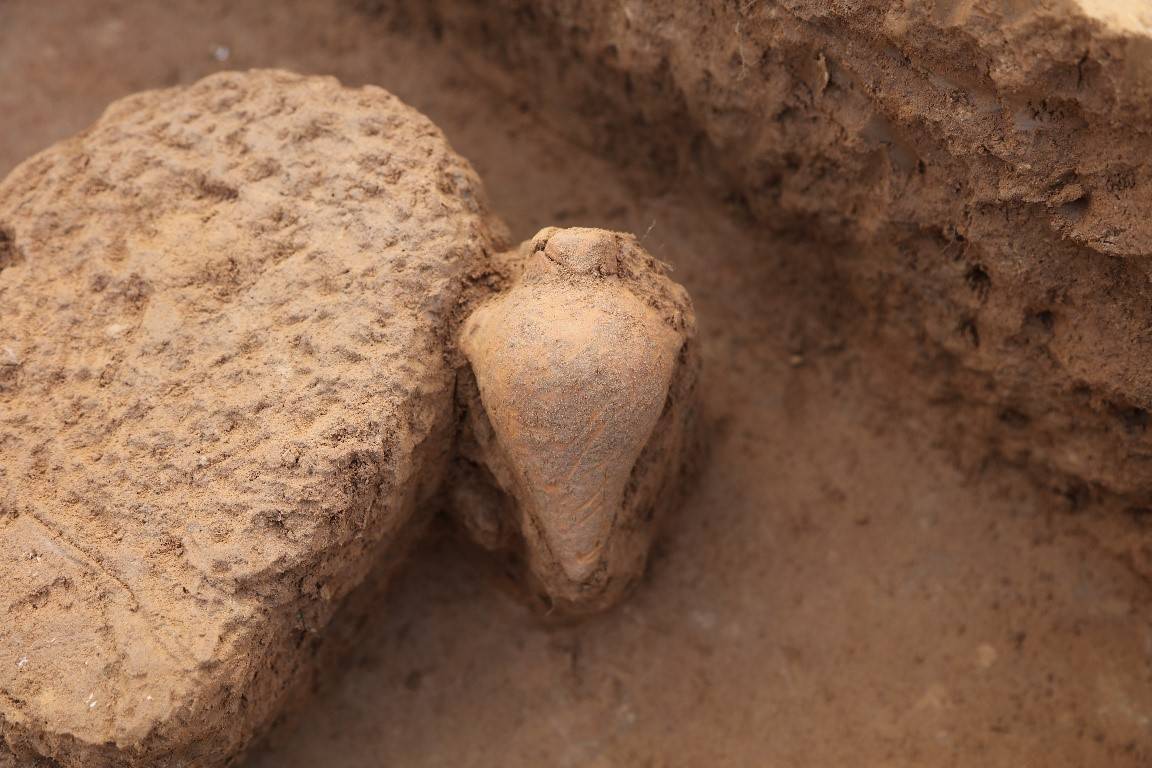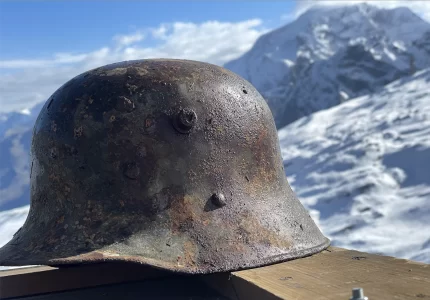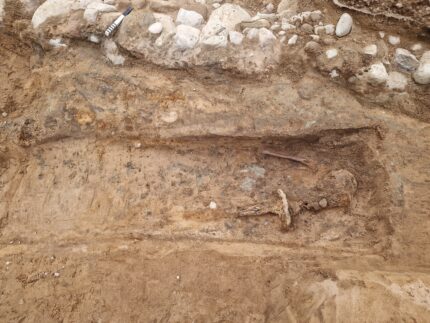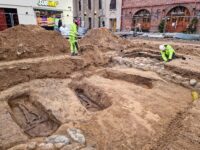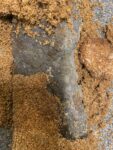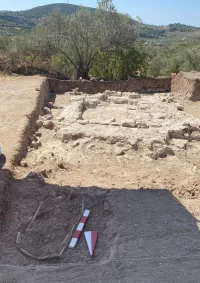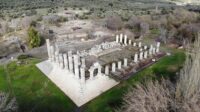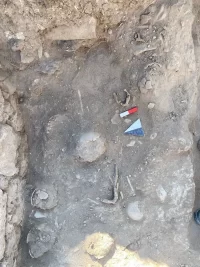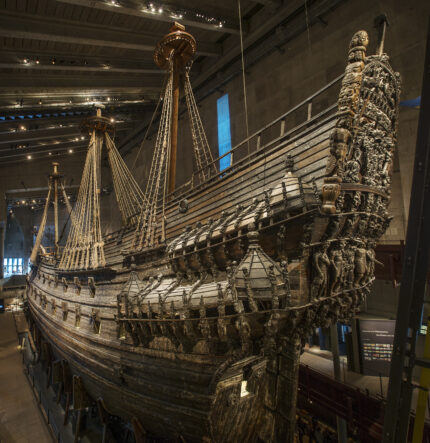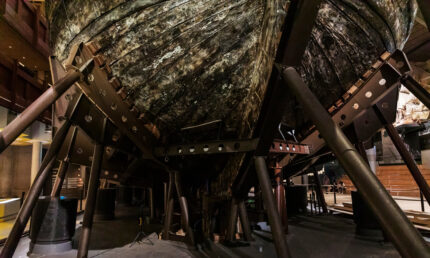Archaeologists excavating the Peiligang site in Xinzheng, Henan Province, eastern China, have discovered a Neolithic pot that is the smallest of its kind. This type of small-mouthed, pointed-bottom amphora-like vessel is one of the characteristic artifacts produced by the Neolithic Yangshao culture. Dating to around 7,700 years ago, this example also the earliest of its kind, pushing back the history of this form by several centuries and providing new evidence about their origin.
The bottle is about 10 cm (four inches) long, smaller than more typical examples of this style. and was found this summer in an excavation of the Neolithic burial area on the west bank of the Shuangjie river which flows north-south through the western section of the Peiligang site. About 20 new tombs were unearthed in the excavation of the burial area. Few grave goods were found and most of them were agricultural tools, usually a combination of a shovel and sickle. A handful of sharpening stones and stone objects were also unearthed from these tombs. The small pot was discovered in Tomb M48.
The Yangshao culture occupied the middle areas of the Yellow River from between 5000 to 3000 B.C. The Yangshao people cultivated crops, supplementing their diets by hunting and moving on to new settlements when the land was no longer productive. The excavation uncovered evidence of pre-Yangshao peoples having lived and worked at Peiligang — ostrich egg beaded ornaments, animal bone fragments, clam shells, pottery fragments, quartz and flint lithics — in the Late Paleolithic.
An early-stage pottery kiln unearthed this year reveals that the Paleolithic Peiligang culture produced pottery at the site and provides new information about transition from the Paleolithic to the Neolithic cultures in the area. Archaeologists believe the small pot may have been used to make koji, a rice wine fermented using the monascus mold (red yeast mold), a process that the Paleolithic settlers of the Peiligang site had already learned.
